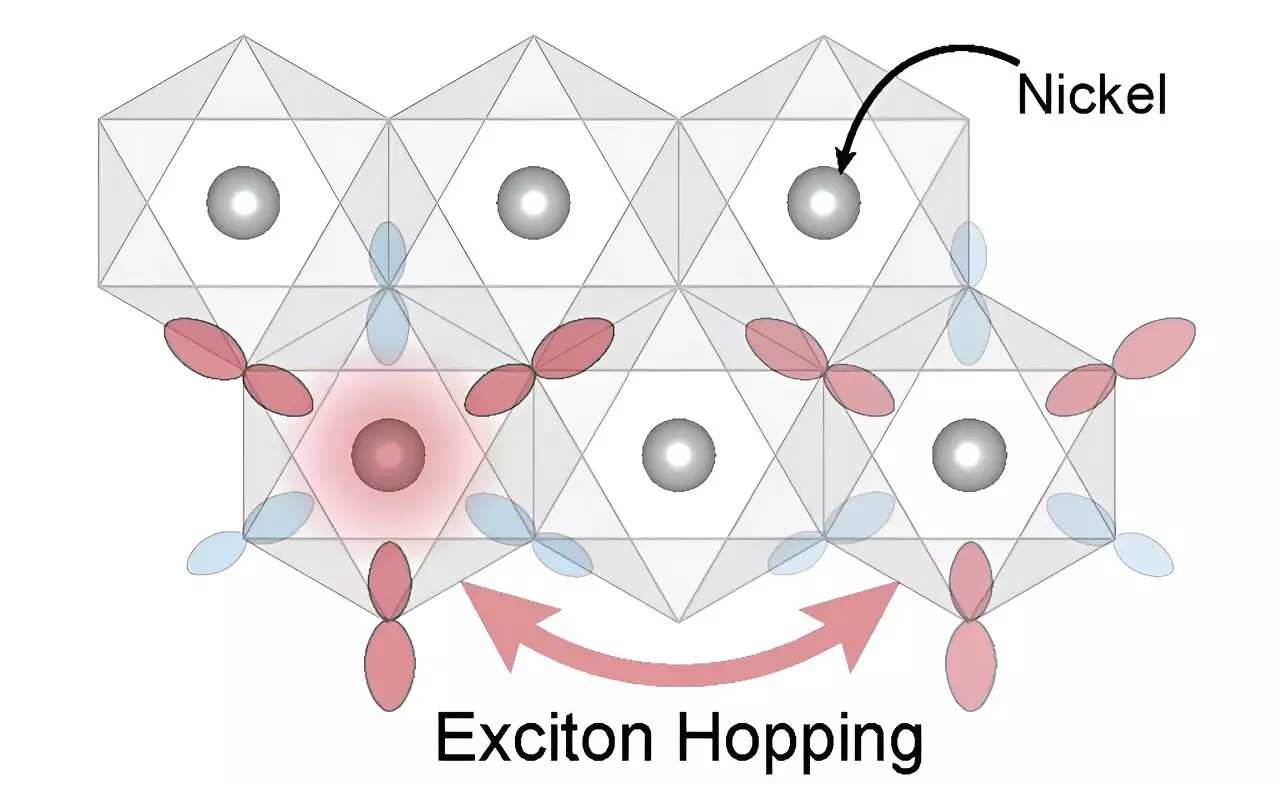The exploration of exotic particles that underpin a unique form of magnetism in ultrathin materials has taken a groundbreaking turn as researchers from MIT and their collaborators unveil new insights into nickel dihalides. These materials, comprising layers of nickel interspersed with halogens, are not just key players in understanding traditional and modern magnetism but also stand at the forefront of potential technological advancements. Their thickness, often reduced to a mere few atoms, juxtaposes simplicity in physical structure with astonishing complexity in physical properties. This juxtaposition offers a rich playground for physicists eager to decode the nuanced behaviors of excitons—quasiparticles that could redefine our current understanding of magnetism.
The Role of Excitons in Magnetism
At the crux of this research are excitons, elementary entities formed when light interacts with material, liberating electrons from their atomic confines while leaving a “hole” behind. What’s fascinating here is that, despite being neutral in charge, excitons possess a profound influence over the material’s magnetic properties through their spin characteristics—akin to tiny magnets that may interact with one another and their environment. The MIT team meticulously dissected how these excitons originated, relying on advanced spectroscopic techniques such as resonant inelastic X-ray scattering (RIXS), to study their propagation across the nickel dihalides, revealing that these excitons aren’t simply confined to their original sites. Instead, they exhibited the ability to “hop” between atoms, thereby enriching the understanding of dynamic interactions in magnetic states.
The Power of Chemical Modification
A pivotal aspect of this work lies in chemically “tuning” the nickel dihalides by varying the halide atoms—swapping chlorine for bromine or iodine. This modification leads to intriguing variations in the energy levels required to generate excitons, highlighting the nuanced interplay between chemical structure and physical behavior. The researchers succeeded in determining essential light wavelengths that catalyze this formation, which could streamline interactions with or even monitoring of the magnetic states in these materials. Such breakthroughs not only empower theoretical foundations but also pave the way for practical applications in quantum computing where excitons might facilitate faster, more secure data processing.
A Foray into Advanced Spectroscopy
The real strength of this research stems from the utilization of RIXS, a technique that stands out for its ability to probe exciton dynamics at unprecedented energy resolutions. This capability is rare and confined to a handful of research facilities globally, with the National Synchrotron Light Source II at Brookhaven National Laboratory being one of the world’s leaders in such equipment. The sensitive nature of RIXS ensures that physicists can effectively visualize how excitons behave post-formation, thus establishing a gateway into understanding their influential role in magnetism at quantum levels. The implications of these observations extend far beyond academic inquiry—they lay foundational stones for future innovations in material science.
The Promise of Future Materials
Understanding the behavior of excitons within nickel dihalides opens the floodgates to discovering and manipulating other materials that may harbor similar—or even superior—magnetic properties. The universality of the observed mechanisms across nickel-based materials suggests that the principles deciphered through this research could have far-reaching applications. The quest now shifts toward identifying novel materials that could exhibit excitonic behaviors and harnessing these properties for developing next-generation electronic devices, sensors, and even components of quantum technology.
Collaboration as a Catalyst for Innovation
This study represents a tapestry woven from interdisciplinary collaboration, drawing expertise from various institutions. With contributions from scientists at prestigious establishments including the Sorbonne and Arizona State University, the collective talent and shared resources amplify the potential for groundbreaking discoveries. Each member of the team, from graduate students to established researchers, plays an integral role in this scientific symphony. As they pioneer new pathways in understanding magnetism through a microscopic lens, they embolden the scientific community to follow suit and explore uncharted territories in materials engineering.
The insights garnered from this research illuminate the dynamic interplay between fundamental science and technology. The understanding of excitons and magnetism in nickel dihalides heralds a new era in material development, marrying theoretical physics with engineering to forge pathways toward practical applications that could one day revolutionize our technological landscape. As we stand on the brink of this new frontier, the enthusiasm surrounding these discoveries is palpable, inviting further exploration into the microscopic world of particles that could usher in the next wave of scientific innovation.


Leave a Reply